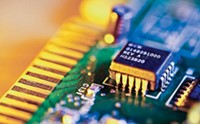Advertisement
Grab your lab coat. Let's get started
Welcome!
Welcome!
Create an account below to get 6 C&EN articles per month, receive newsletters and more - all free.
It seems this is your first time logging in online. Please enter the following information to continue.
As an ACS member you automatically get access to this site. All we need is few more details to create your reading experience.
Not you? Sign in with a different account.
Not you? Sign in with a different account.
ERROR 1
ERROR 1
ERROR 2
ERROR 2
ERROR 2
ERROR 2
ERROR 2
Password and Confirm password must match.
If you have an ACS member number, please enter it here so we can link this account to your membership. (optional)
ERROR 2
ACS values your privacy. By submitting your information, you are gaining access to C&EN and subscribing to our weekly newsletter. We use the information you provide to make your reading experience better, and we will never sell your data to third party members.
Education
Newscripts
Science Friction with Bob Wolke
by Science Friction with Bob Wolke
October 15, 2007
| A version of this story appeared in
Volume 85, Issue 42
How many ostensible "million-dollar ideas" have you had in your lifetime?
And how many millions of dollars have you made from them?
Uh, huh. I thought so. Me, too.
It started when I was a kid with a chemistry set. I had precipitated something or other in a test tube and wanted to extract a sample of the supernatant liquid. But I didn't have a centrifuge, and the amount of the suspension was too small to filter.
I fastened a small piece of filter paper over the end of a glass tube and dropped it, paper-end-down, into the test tube. The hydrostatic pressure slowly forced the liquid through the filter paper and up into the tube, which I then removed with its content of crystal-clear supernatant liquid.
Million-dollar idea? Wow! A new laboratory technique! I would be as famous as Bunsen and Büchner! I would name it the Waterpressure-Operated Lifting Klarifier, or WOLK. But of course that didn't matter because I had nobody to tell it to.
Until now. Make me an offer.
Another million-dollar idea came to me during my first faculty appointment, which was at the University of Florida. A born and bred northeastern Yankee, I found myself living in a semitropical climate for the first time. There was Spanish moss, alligator grunts in the night, palmetto bugs (née cockroaches), and mildew. Lots of mildew.
There wasn't much I could do about the alligator chorus, which I accepted as a sort of animated atmosphere, but I couldn't think of the roaches in the same way. The most I could manage with them was a sort of grudging détente.
Conciliation with the mildew evaded me, however. In the unrelenting heat and humidity of the "Sunshine State," mold was omnipresent and omnivorous, growing on virtually any kind of organic matter, including my most essential form of organic matter: my books. Canvassing the natives for a solution proved fruitless; they might as well have stonewalled me with "What mildew?" the way they did with "What roaches?"
Here, I thought, was an opportunity for a chemist (me) to make a million bucks.
Studying up on mildew, I learned that it consists of several species of aerobic molds (fungi) that thrive in warm, unventilated, wet, or humid places. When conditions are right, the spores secrete an enzyme that breaks down organic matter into small molecules that they can use for growth and reproduction. Any of several copper-containing fungicides would kill them.
Aha! What if I made an aqueous solution of a copper salt and some kind of water-soluble wax, soaked a cloth in the solution, and dried it? I could then wipe it on a surface such as the cover of a book, leaving behind an imperceptible coating of copper that would prevent the growth of mold.
Where could I find a water-soluble, waxy substance? Serendipitously, an advertisement for Union Carbide's Carbowax polyethylene glycols leapt out at me from the pages of C&EN. I sent for a sample, fantasizing that I would market my million-dollar product as Mil-Don't.
But alas! As an as-yet-untenured professor, I had to abandon my mildew project in favor of publication-producing research. And that's why to this day there is still mildew in the state of Florida.
(Postscript: For a forthcoming article in Fine Cooking magazine, I recently tested a small kitchen appliance, called the Lotus Sanitizing System, that makes ozonated water for disinfecting fruits and vegetables. Ozone has an even higher oxidation potential than sodium hypochlorite bleach, and I found that it does quite a decent job of eradicating mildew in shower-tile grout lines.)
My career having continued to cramp my inventive adventures, I have had to confine my million-dollar ideas to just that: ideas only. Here are a few that have occurred to me over the years.
• A You-Drive-It rickshaw rental agency. The customer rents the two-wheeled carriage, positions himself between the handles and pulls it anywhere he wants to go.
• A calculator for Roman numerals. There would have to be only seven numerical keys: I, V, X, L, C, D, and M.
• An electric fork to go with the electric knife.
• And finally, an even sillier invention that I cannot claim as my own. In a hardware store, I saw a sign promoting "Cordless Screwdrivers." Well, what's so new about that? I've been using screwdrivers all my life, and I can't remember ever having to plug one in.
Bob Wolke can be reached at sciencefriction.wolke@gmail.com.




Join the conversation
Contact the reporter
Submit a Letter to the Editor for publication
Engage with us on Twitter